-
1
Confirm Diagnosis: Diagnosing Fibroids usually requires an ultrasound or an MRI to visualize the uterus and plan treatment.
-
2
Consult with Dr. Higgins: If you have Fibroids, consult
Dr. Higgins for support and guidance towards a healthier, more comfortable life. -
3
Treatment Options: In your consultation with Dr. Higgins, he will educate you on your diagnosis while discussing both the implications of your condition as well as the pros and cons of each available treatment option.
ALL YOU NEED TO KNOW ABOUT FIBRIODS
Watch Dr. Mikhail C.S.S Higgins talk about Uterine Fibroids
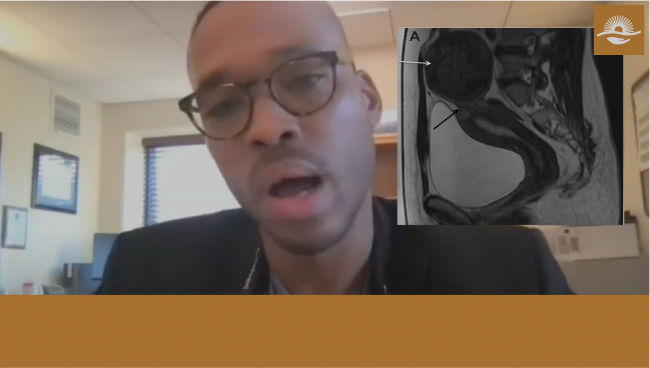
What are Fibroids?
Fibroids are benign tumors made of muscle and fibrous tissue located in various parts of the uterus. They range in size from tiny lesions to large masses that can enlarge the uterus and which potentially compress adjacent tissues and organs such as the urinary bladder and gastrointestinal tract. Their growth can even compromise the development of an embryo, resulting in miscarriages or other pregnancy-related issues.
The exact cause of Fibroids is not fully known. However they arise from genetic mutations, hormonal imbalances and other environmental factors which stimulate their development.
Women who are at higher risk for development of symptomatic Fibroids are those in their 30s or 40s, those with a family history of Uterine Fibroids and women who are of African, Latin or Asian heritage, although white women also remain at notable risk. Lifestyle factors such as obesity and consuming pro-inflammatory diets also contribute to the development and continued growth of Uterine Fibroids.
Are you experiencing any of these symptoms?

Heavy menstrual bleeding

Menstrual periods lasting more than a week

Backache

Constipation

Bloating, pelvic pressure or pain

Miscarriages

Pain assosicated with intercourse

Frequent urination, urinary urgency, or difficulty emptying the bladder
Easy Diagnosis is Key to your Recovery.
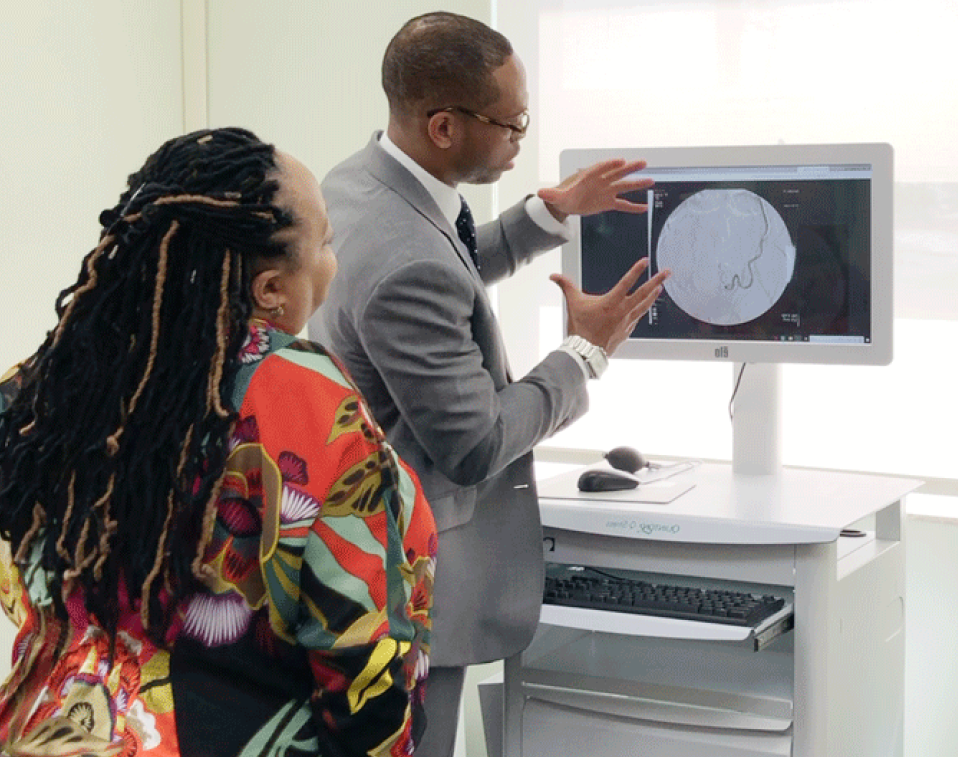
How DR. HIGGINS CAN Diagnose FIBROIDS
Expert Imaging Techniques for Accurate Detection
Fibroids are commonly diagnosed using a combination of medical approaches.
Initially, a pelvic examination may be conducted to check for irregularities in the shape of the uterus. If Fibroids are suspected, further diagnostic imaging tests such as an ultrasound or Magnetic Resonance Imaging (MRI) may be utilized.
These imaging techniques provide detailed views that help in identifying the presence, size, and location of Fibroids, allowing for accurate diagnosis and effective treatment planning.
The Bahamas Fibroid & The Interventional Clinic at Family Medicine Center in Nassau, The Bahamas, provides an innovative non-surgical alternative for effective Fibroid treatment, previously unavailable in The Bahamas and The Caribbean. Emphasizing minimal invasiveness and precision, our interventional radiologic treatments align with our wellness philosophy of treating disease holistically and completely from the inside out.
Fibroid Treatment Options for women everywhere
Your Treatment Options
Treatment for Fibroids varies based on symptom severity, Fibroid size and location, reproductive considerations and available treatment expertise.
Available treatments include:

MEDICATIONS
To manage symptoms, such as hormonal treatments that regulate menstrual cycles or, target hormones that regulate Fibroid growth.

Minimally invasive procedures
Including Uterine Artery Embolization (UAE), which shrinks Fibroids by cutting off their blood supply.

Surgical options
Myomectomy (removal of Fibroids, preserving the uterus) or, Hysterectomy (removal of the uterus as a definitive solution that prevents pregnancies).


A NEW INNOVATIVE NON-INVASIVE TREATMENT
Uterine Artery Embolization (UAE)
Effective, Holistic Fibroid Treatment Options for Women everywhere.
Dr Higgins’ minimally invasive procedures utilize advanced imaging techniques to support the effective treatment of conditions such as Uterine Fibroids and Adenomyosis without the need for traditional surgery, offering patients optimal relief with minimal discomfort and recovery time.
These state-of-the-art interventions prioritize patient safety and health outcomes. Dr. Higgins brings innovative solutions to common yet challenging conditions, emphasizing a patient-centered approach that minimizes discomfort and recovery time.
Uterine Artery Embolization (UAE) can be a good option for a woman with Uterine Fibroids for several reasons:
- Non-surgical approach: UAE is a minimally invasive procedure that doesn’t involve surgery, reducing the risks associated with traditional surgery.
- Preserving the uterus: UAE aims to shrink the Fibroids by cutting off their blood supply, preserving the uterus and its functionality.
- Shorter recovery time: Compared to surgery, UAE generally has a shorter recovery period, generally one week, allowing individuals to return to their daily activities sooner.
- Reduced symptoms: UAE can help alleviate symptoms associated with Fibroids, such as heavy menstrual bleeding, pelvic pain, and pressure.
- Little to no scarring: Involves a tiny incision the size of a grain of rice, resulting in minimal scarring compared to surgery.
- Option for those who want to avoid hysterectomy: For individuals who wish to eliminate their Fibroids and preserve their uterus, UAE can be a highly desirable alternative to hysterectomy.
Your Path to Fibroid Treatment
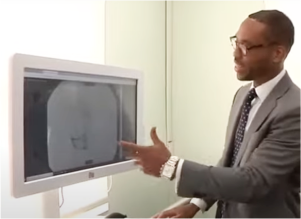
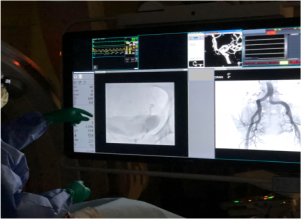
-
4
Schedule UAE Procedure: If you’re a candidate for the Uterine Artery Embolization (UAE) procedure, our scheduling team will assist you in securing a suitable date and time for your treatment and will provide you with pre-procedure instructions.
-
5
Uterine Artery Embolization: Your UAE will occur at our treatment facility. You will be observed post procedure to ensure an appropriate response to your treatment. You will either be discharged the same day after 2-6 hours of monitoring or you may be discharged after 23 hours of observation, depending on the specifics of your treatment. Standard recovery at home post-treatment is typically one week, after which you may gradually return to your normal daily activities.
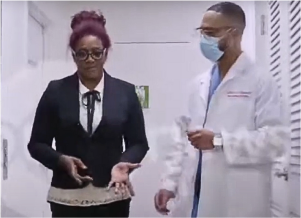
-
6
Clinical follow-up: You will return for clinical follow-up with Dr. Higgins at one month, six months and one year post procedure to thoroughly evaluate the UAE treatment’s effectiveness and collaboratively plan and execute post-treatment optimization.
Dr. Mikhail Higgins: A Pioneer in Minimally Invasive Fibroid Treatment
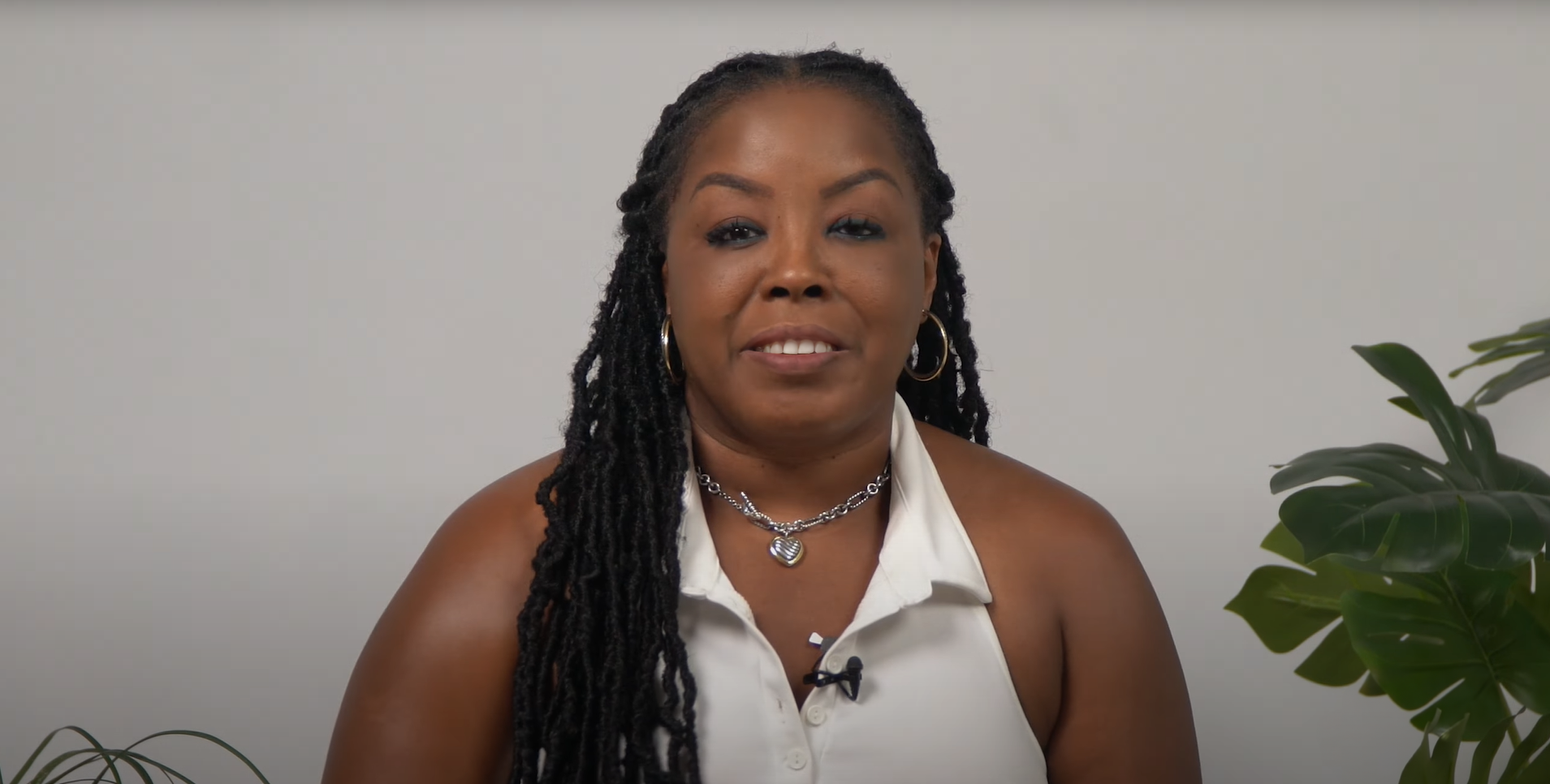
Chegera Pople

Michelle Sands
Nassau, The Bahamas
“Before visiting Dr. Higgins, I suffered for over 10 years with uterine Fibroids, experiencing severe cramps, heavy bleeding, stomach pains, and anemia. After a referral and consultation, Dr. Higgins recommended Bilateral Uterine Artery Embolization—a procedure that doesn’t require surgical incisions and offers a quick two-week recovery. The procedure went smoothly, and by the second week, I was already feeling fantastic. Six months later, my energy levels soared, and my periods became notably lighter, transforming my quality of life. I am immensely grateful to Dr. Higgins and his team for their exceptional care and support. Thank you for changing my life.”

Shaniska Hanna
Nassau, The Bahamas
“Battling Fibroids since 23, I faced worsening symptoms over the years. Initially advised to undergo a hysterectomy, I sought natural remedies and later, a myomectomy, which provided temporary relief. The symptoms returned, leading me to Dr. Mikhail Higgins in Nassau for a minimally invasive procedure, despite skepticism from my gynecologist. In my forties, post-procedure, my life has transformed: no more heavy bleeding or painful periods. I advocate for this treatment, highlighting my journey to freedom.”

Rochelle Moss
Nassau, The Bahamas
“In 2023, I endured excruciating stomach pain leading to a gallbladder removal and a fibroid diagnosis. After consulting with doctors, I underwent a less invasive Uterine Fibroid Embolization by Dr. Mikhail Higgins, addressing symptoms like heavy periods and bloating. The procedure significantly improved my quality of life, including lighter periods and reduced pain. I strongly recommend this treatment for fibroid sufferers, emphasizing the importance of following post-operative instructions for optimal recovery.”

Keeshan Fowler
Nassau, The Bahamas
“In December 2022, I had a Uterine Artery Embolization by Dr. Mikhail Higgins, a compassionate expert. His care and thoroughness throughout made the experience comforting. The procedure, enhancing convenience by being local, led to significant health improvements—easier periods, less cramping, and a smaller waist. Grateful for the life-changing results, I highly recommend Dr. Higgins for Fibroid issues and aim to raise awareness to help others.”

Asia Saunders
Nassau, The Bahamas
“Facing worsening Fibroids and severe discomfort, I sought treatment to avoid scarring from traditional surgery. In The Bahamas, Dr. Higgins offered an alternative solution, providing professional, empathetic care and a virtually scarless outcome. This transformative experience from consultation to recovery led to a significant improvement in my quality of life. Dr. Higgins is highly recommended for his ability to listen, understand, and deliver outstanding clinical results.”

Tamisha Knowles
Nassau, The Bahamas
“Thank you to Dr. Higgins and the entire team. To God be all the Glory. To all the women that will read this, I just want to encourage you to call Dr. Higgins at Family Medicine Center today and book a consultation. I promise you it will change your life forever. I did not have to get a hysterectomy that would have triggered early menopause.”
Get Started on Your Path to Wellness.

Understanding Fibroids
We’ve got all the information you need to know about Fibroids
While their exact cause remains uncertain, studies indicate that genetic factors and prolonged estrogen exposure could increase the likelihood of developing Fibroids.
If you have no symptoms, treatment might not be needed. However, many patients don’t know that many troublesome issues are related to Fibroids. Even when Fibroids are small, they will likely continue to grow. They may become more prone to contribute to worsening symptoms such as heavy menstrual bleeding and bulk symptoms such as constipation, bloating, pain on intercourse, increased urinary frequency and urgency, and may provoke miscarriages or impaired fertility. As such, you should consult your interventional radiologist to determine if and when treatment may be best for you.
The optimal treatment for Fibroids depends in part on your pregnancy plans and the timing of your intended pregnancy, whether or not you have had miscarriages in the past and your specific and overall clinical presentation. Discuss your unique clinical presentation and fertility goals with your interventional radiologist to find the most suitable option for you.
While Fibroids primarily cause weight gain rather than weight loss, they can significantly impact your weight. They often lead to abdominal swelling and bloating due to their growth in the abdominal cavity. This “Fibroid belly” can make the abdomen bulge and appear several months pregnant, resulting in tight clothing and discomfort. Hormonal imbalances, particularly in estrogen and progesterone, can also contribute to weight gain associated with Fibroids.
Uterine Fibroids are a common condition characterized by benign (non-cancerous) tumors developing in the uterus. These muscular tumors are routinely non-cancerous. However, in less than 1% of women presenting with Fibroids, a cancerous tumor can be found. Although a rarity, this statistic makes Magnetic Resonance Imaging (MRI) of women with suspected or known Fibroids particularly important.
For uterine Fibroids, it’s helpful to avoid diets high in fat and processed meats. It is also helpful to consume more whole grains, fruits, vegetables, and legumes. Green tea and turmeric contain plant-based compounds that may reduce Fibroid growth. Drinking a few cups of green tea daily might help shrink Fibroids naturally while reducing symptoms.
Women with uterine Fibroids often feel fatigued. This may be due to increased urinary urgency and frequency or pelvic discomfort that may repeatedly disrupt restful sleep. More commonly, heavy menstrual bleeding may result in anemia, which may result in low energy and fatigue. With fewer red blood cells carrying oxygen through the bloodstream, symptoms like weakness and shortness of breath can further contribute to exhaustion.
Fibroid symptoms vary in intensity and can be mild or severe, intermittent or constant. During menses, menstrual bleeding is often moderate to severe. Abdominal cramping associated with these periods may also be mild to severe. Abdominal bloating usually worsens leading up to menses and may improve the week after. Positions that place the weight of the Fibroids on the urinary bladder or rectum may worsen compressive symptoms such as urinary frequency or constipation, respectively. Acidic and pro-inflammatory foods may worsen subjective symptoms. Pain associated with Fibroids may occur or worsen during intercourse, exercise, bowel movements, or menstruation and may radiate down the leg. An enlarged uterus can pressure nearby organs, while pedunculated Fibroids may cause severe pain if their stalk twists.
